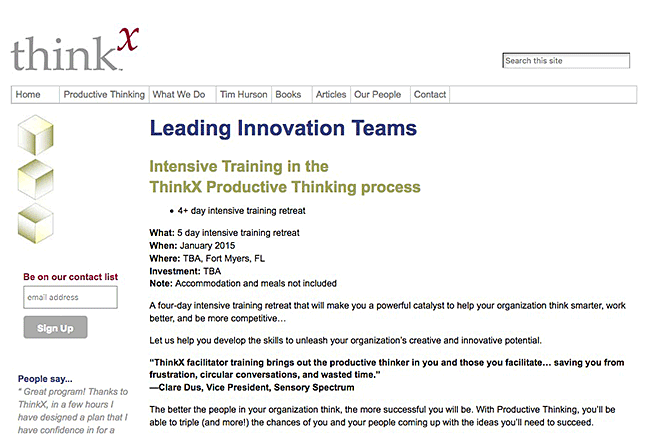Productive Thinking
Background: The Productive Thinking Model was developed by Tim Hurson and is outlined in his book Think Better: An Innovator's Guide to Productive Thinking. The book also provides a guide for training oneself to think more creatively and more productively.

Description: Hurson's six-step, Productive Thinking, problem-solving and opportunity-finding framework relies upon the Creative Problem Solving Process (CPS) and NASA's IDE. It is designed to incorporate creativity techniques such as brainstorming and lateral thinking as needed. Like its predecessor CPS, Productive Thinking calls for both creative thinking and critical thinking in each of the following steps.
1. What's Going On?
The first step establishes the context of the situation by identifying the "itch" or the problem that needs to be resolved. Four sub-questions help achieve this objective.
2. What is success?
Imagine an ideal future in which your issue is resolved, and establish clear, observable success criteria to evaluate potential solutions.
3. What's the Question?
Frame the challenge in the form of a question. Then brainstorm in order to elicit as many questions as possible. Cluster, combine, and move the most stimulating questions into the next step.
4. Generate Answers
In this step, participants brainstorm solutions, then cull, cluster, combine, clarify, and choose one or more for further development.
5. Forge the Solution
Evaluate three or four of the most interesting ideas against the success criteria. Choose the most promising. After asking what is good and bad about each, analyze, improve, and refine them into a robust solution.
6. Align Resources
The final step transforms the selected ideas in an action plan with timelines, milestones, responsibilities, and a list of other issues to be resolved later.
